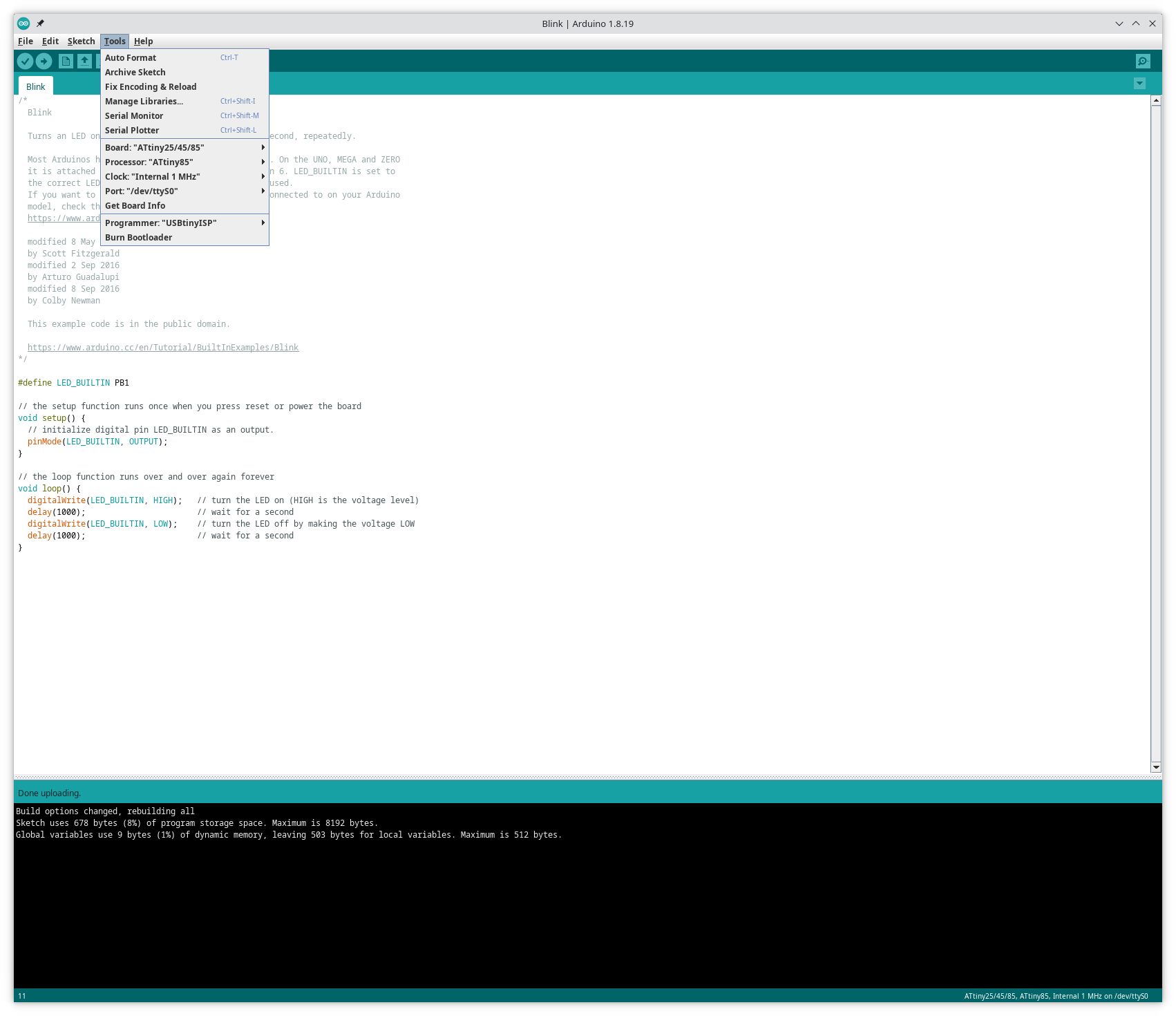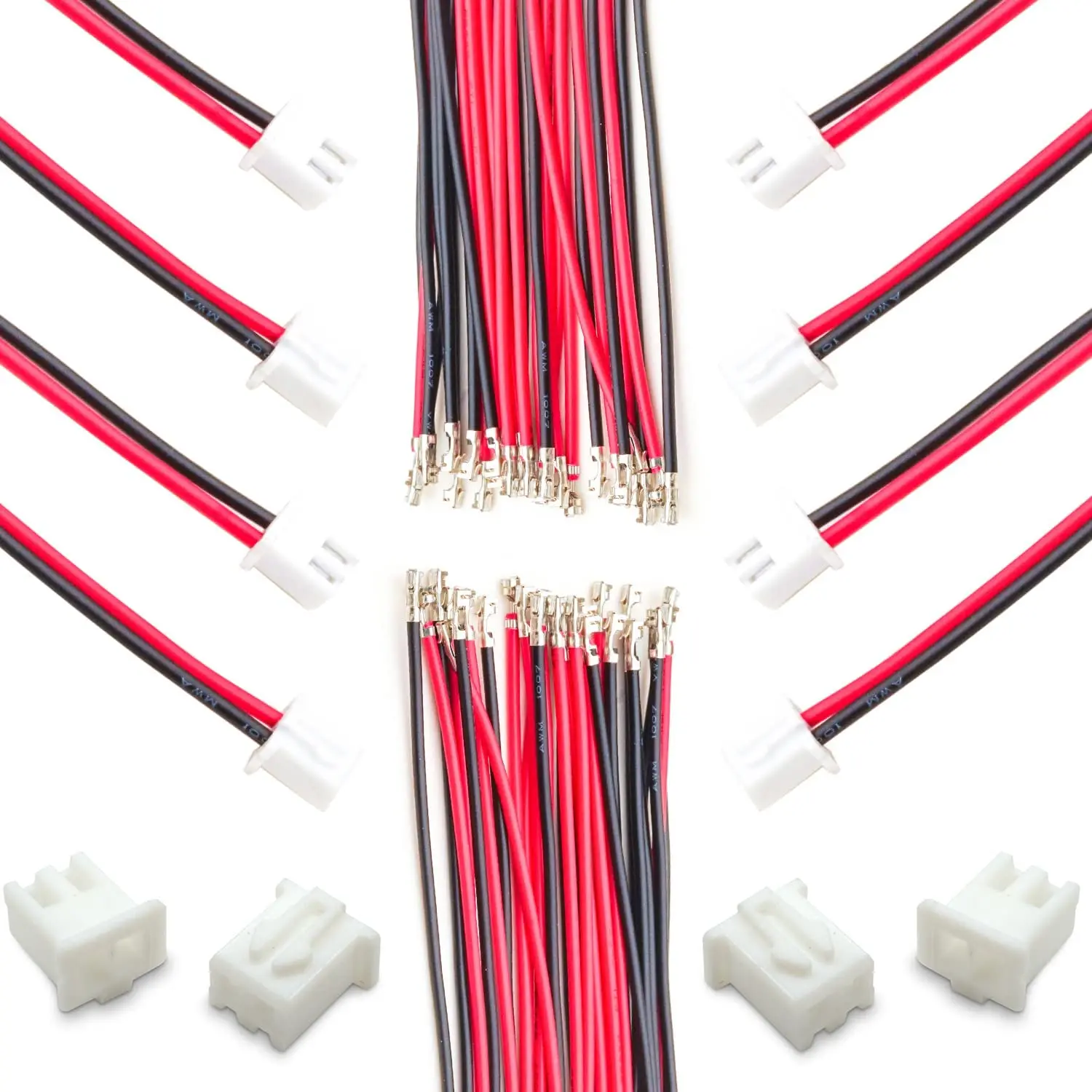I have a new post on Hackaday: New Brymen Bluetooth BM788BT Digital Multimeter Coming Soon.
Category Archives: Learning
Introducing Infrared Remote Control Protocols
I have a new post on Hackaday: Introducing Infrared Remote Control Protocols.
The Spade Hardware Description Language
I have a new post on Hackaday: The Spade Hardware Description Language.
ATtiny85 in HW-260 board
I have my ATtiny85 microcontroller installed in a HW-260 development board (purchased from AliExpress). I program the ATtiny85 with the SparkFun Tiny AVR Programmer, the setup guide is here: Tiny AVR Programmer Hookup Guide.
On the SparkFun programmer the onboard LED is PB0. On the HW-260 the onboard LED is PB1. This is the code I used to flash the HW-260 LED:
#define LED_BUILTIN PB1
// the setup function runs once when you press reset or power the board
void setup() {
// initialize digital pin LED_BUILTIN as an output.
pinMode(LED_BUILTIN, OUTPUT);
}
// the loop function runs over and over again forever
void loop() {
digitalWrite(LED_BUILTIN, HIGH); // turn the LED on (HIGH is the voltage level)
delay(1000); // wait for a second
digitalWrite(LED_BUILTIN, LOW); // turn the LED off by making the voltage LOW
delay(1000); // wait for a second
}
You can see the programmer settings I used in Arduino IDE in this screenshot:

Are you the right person to design complex electronic boards?
This evening I watched Are you the right person to design complex electronic boards? which discusses what being a professional electronics designer entails. I particularly liked this slide which compares and contrasts the books a hobbyist might read versus what a professional might read.
The discovery of oxygen
This video about the discovery of oxygen is interesting: This IMPOSSIBLE Theory Led to the Discovery of Oxygen.
Introducing Learning the Art of Electronics | Learning Electronics In The Lab With Jay Jay
This post is part of my video blog and you can find more information about this video over here.
You can support this channel on Patreon: patreon.com/JohnElliotV
This project’s homepage is here: John’s wiki § Learning the Art of Electronics.
In this video we introduce a new feature of the show. In these segments we will be working through Learning the Art of Electronics.
We will be doing a total of 27 videos for this feature. 25 labs, this introduction, and a conclusion. Videos will come out on the first Tuesday of every month (hopefully!).
We did a new book teardown for this book last year: New Book Teardown #3: Learning The Art of Electronics: A Hands-On Lab Course (2016) | In The Lab. You can see in the comments a number of people encouraged me to make videos for this book, so that’s what we’re doing now.
Also a shout out to my mate over on Learning as a hobby for encouraging me to undertake this project.
Thanks very much for watching! And please remember to hit like and subscribe! :)
Following is a product I use picked at random from my collection which may appear in my videos. Clicking through on this to find and click on the green affiliate links before purchasing from eBay or AliExpress is a great way to support the channel at no cost to you. Thanks!
JST XH2.54 6pin Pre-crimped Connector |
Let’s go shopping!
All You Need To Know About The Diode Test Mode On Your Multimeter To Fix Stuff
Today I watched All You Need To Know About The Diode Test Mode On Your Multimeter To Fix Stuff. Richard listed some typical forward voltages across various types of diodes:
- Schottky Diode ~ 0.15V
- Germanium Diode ~ 0.22V – 0.28V
- Fast Switching Diode ~ 0.4V – 0.45V
- Silicon Diode ~ 0.5V – 0.6V
- Red LED ~ 1.7V – 1.8V
- Yellow LED ~ 1.8V
- Green LED ~ 2.2V – 2.3V
10 Things I Wish I Knew When I Started Microsoldering
I really enjoyed watching this video: 10 Things I Wish I Knew When I Started Microsoldering. The ten things are:
- You can only learn by actually working on motherboards
- You can actually get good quality tools (for cheap) from AliExpress
- Just because a tool works well for someone else doesn’t mean it will work well for you
- 90% of good soldering comes from having an understanding how heat works and how heat dissipates
- All the pros that you see on YouTube are still learning too!
- Know your limits, there are some problems you can’t fix
- Some things aren’t worth fixing because of the time and effort and cost involved, but sometimes things are worth fixing just for practice and learning purposes
- BGA work isn’t as scary as it seems or is made out to be
- Buy your consumables in bulk
- Spend time learning from pros on YouTube!
Texas Instruments Datasheets
I was watching The Differential Pair Becomes an Op-Amp – Transistors 101, episode 18 and they mentioned this datasheet: https://ti.com/lit/ds/symlink/lm358.pdf. That URL looks very hacker friendly to me, if you know what you’re looking for you can probably guess the URL! I haven’t tried this in anger yet, this is just a note for Future John.
